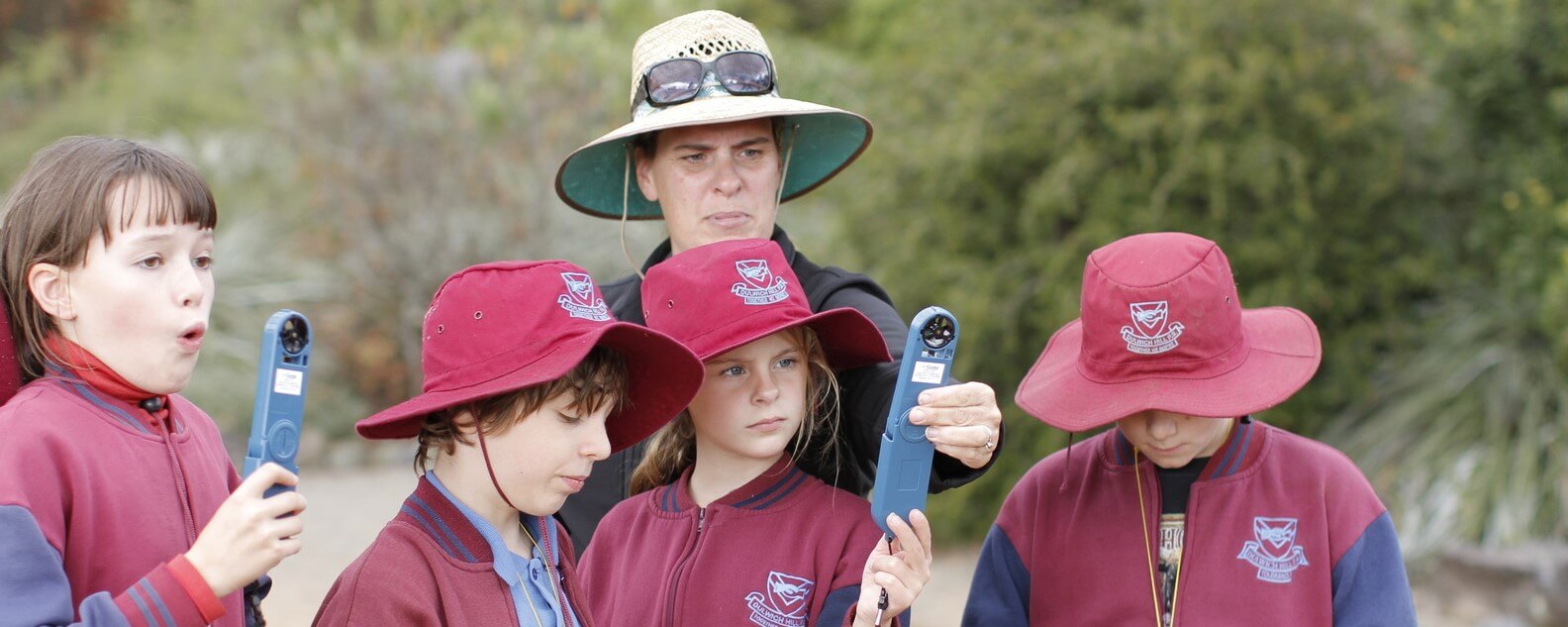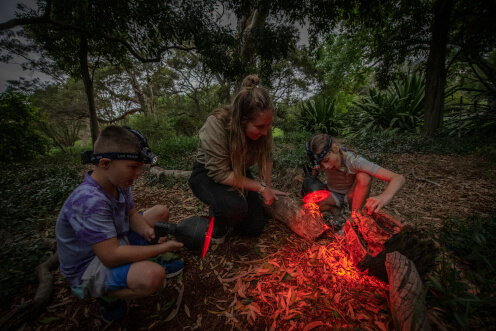Location, location, location!
Explore and record features of these beautiful locations while developing geographical skills.

Stage 2
Geography
2 hours
Minimum charges apply. Discounts apply for full day programs.
Students will explore different locations to investigate the natural vegetation and human features of the Garden.
The class completes a discovery, mapping activity, habitat building exercise and uses geographical tools to discover environments and design spaces.
Students will
- Conduct a scavenger hunt to identify natural and human features of the Garden, and how the features are used.
- Use their geographical knowledge of directions to build shelters using sticks and loose parts.
- Apply geographical tools of inquiry, such as thermometers and anemometers, to measure characteristics of different locations to either plan a new garden bed, or pick the perfect picnic spot.
Key content
- Identify natural and human features of the Garden, and how the features are used.
- Explore unfamiliar surroundings with all their senses.
- Apply geographical information to help decide on ideal locations.
- Work collaboratively with others to construct habitats for living things in the Garden.
- Explain what makes a shelter suitable for the conditions.
Links to New South Wales curriculum
Focus Syllabus Outcomes
Geography
- Examines features and characteristics of places and environments (GE2-1)
- Describes the ways people, places and environments interact (GE2-2)
- Acquires and communicates geographical information using geographical tools for inquiry (GE2-4)
Supported Syllabus Outcomes
Natural Environment
- Identifies the basic needs of living things (STe-8NE)
Working Scientifically
- Explores their immediate surroundings by questioning, observing with their senses and communicating to share their observations and ideas (STe-4WS)

"Enjoy a scavenger hunt to identify natural and human features of the Garden, and how the features are used."
Related excursions

Experience the Garden and its fascinating nightlife on this adventure by torchlight.

Based on Katrina Germein’s book Big Rain Coming, students will explore how First Nations people read and understand daily and seasonal weather changes and how this affects the places and environments around us.

Students will investigate a wide variety of local native plants that are integral in the life of First Nations peoples, exploring how these plants contribute to sustainability practices and the preservation of natural resources.